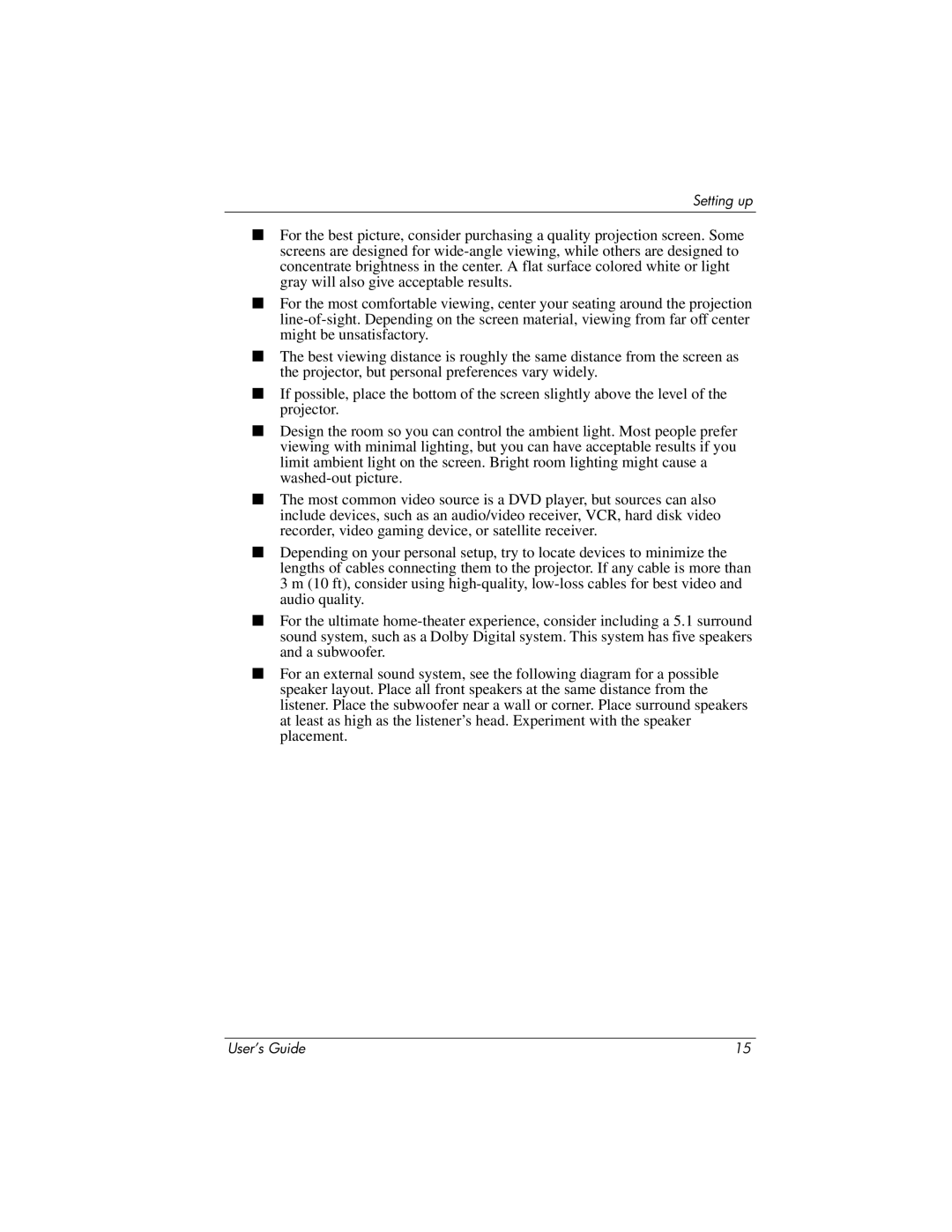
Setting up
■For the best picture, consider purchasing a quality projection screen. Some screens are designed for
■For the most comfortable viewing, center your seating around the projection
■The best viewing distance is roughly the same distance from the screen as the projector, but personal preferences vary widely.
■If possible, place the bottom of the screen slightly above the level of the projector.
■Design the room so you can control the ambient light. Most people prefer viewing with minimal lighting, but you can have acceptable results if you limit ambient light on the screen. Bright room lighting might cause a
■The most common video source is a DVD player, but sources can also include devices, such as an audio/video receiver, VCR, hard disk video recorder, video gaming device, or satellite receiver.
■Depending on your personal setup, try to locate devices to minimize the lengths of cables connecting them to the projector. If any cable is more than 3 m (10 ft), consider using
■For the ultimate
■For an external sound system, see the following diagram for a possible speaker layout. Place all front speakers at the same distance from the listener. Place the subwoofer near a wall or corner. Place surround speakers at least as high as the listener’s head. Experiment with the speaker placement.
User’s Guide | 15 |
